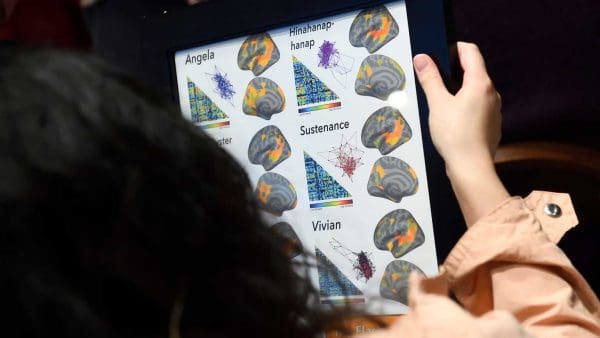A group of Johns Hopkins University scientists collaborated with more than 100 researchers around the world to assemble and analyze the first complete sequence of a human genome, two decades after the Human Genome Project produced the first draft.
The work is part of the Telomere to Telomere (T2T) consortium. It’s led by researchers at the National Human Genome Research Institute (NHGRI); University of California, Santa Cruz; and University of Washington, Seattle.
Johns Hopkins contributed key research to the effort to decipher our DNA—which has remained a mystery despite the initial progress 20 years ago. The revelations are expected to open new lines of molecular and genetic exploration while providing scientists with a clearer picture of how DNA affects the risks of diseases, and how genes are expressed and regulated.
A package of six papers reporting the achievement appears in the March 31 issue of Science, along with companion papers in several other journals.
The impact of the genome
Opening up these new parts of the genome, we think there will be genetic variation contributing to many different traits and disease risk.”
—Rajiv McCoy, assistant professor
Rajiv McCoy is assistant professor in the Department of Biology, whose research focuses on human genetics and evolution. “There’s an aspect of this that’s like, we don’t know yet what we don’t know.”
McCoy and 12 Johns Hopkins researchers worked on different aspects of the international initiative. They contributed to the main genome assembly project and to several companion works analyzing what can be learned about patterns of genetic and epigenetic variation from person to person through the newly sequenced sections of the genome.
The study found that because the previous model, known as the reference genome, was a composite of multiple individuals’ genomes essentially “stitched together,” it created artificial “seams” where the model switches from the genome of one person to another. The new, complete version eliminates those seams and is more representative of what an individual’s actual genome looks like.
Using the new human genome model, the Johns Hopkins contributors also quantified how frequently different versions of the same gene occur in diverse human populations. That serves as an evolutionary record of both random fluctuations and potential natural selection affecting certain parts of the genome.
Adapting to the new genome mapping
One immediate challenge McCoy identified is that clinical labs will need to transition from the previous genome mapping to the new complete version, no small undertaking, requiring that they adjust the information they have about the links between genes and diseases.
“There are all sorts of databases and resources that have been built around the previous version, and it can be hard to get people to shift over,” he said. “So one goal of our work now is to encourage these important resources to move over to the new mapping to really empower the community.”





